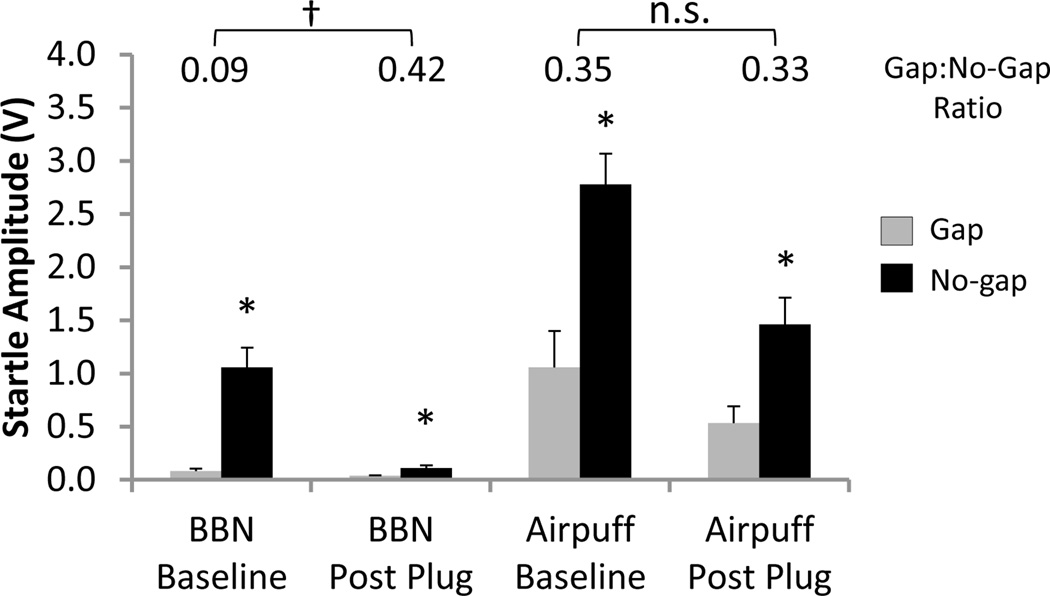Figure 8.
Comparison of group mean gap and no-gap startle amplitudes for the 16 kHz carrier noise frequency during broadband noise (BBN) and airpuff gap prepulse inhibition testing at baseline and during unilateral earplug. For all conditions, the startle amplitude during the gap trials (grey bars) was significantly lower than during the no-gap trials (black bars)(two-way repeated measures ANOVA and Student-Newman-Keuls post hoc tests, * P<0.05). Above each pair of grey and black bars is the calculated gap:no-gap ratio, the measure traditionally used to assess gap detection ability in the gap- startle paradigm. The significant increase in the gap:no-gap ratio during BBN stimulation post-earplug compared to baseline is consistent with a false-positive for tinnitus (two-way repeated measures ANOVA and Student-Newman-Keuls post hoc test, † P<0.001). Given that the startle response in the gap trials at BBN Post Plug was significantly lower than that of the respective no-gap trials, the elevated gap:no-gap ratio was not the result of a gap detection deficit but rather the dramatic reduction in startle reactivity in the no-gap trials. Values represent mean ± SEM for n = 6. n.s., non-significant statistical difference.

